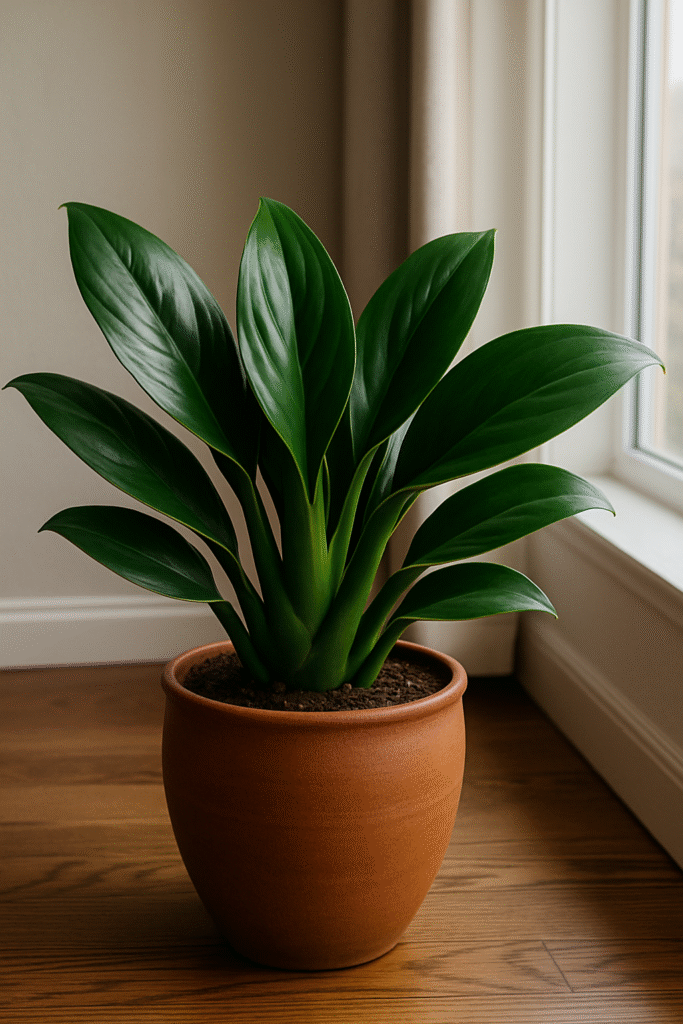The Pacová, scientifically known as Philodendron martianum, is a tropical plant native to Brazil’s Atlantic Forest. With its thick, glossy leaves and robust appearance, it has become a popular choice for interior decor. Low maintenance and visually striking, this plant is perfect for homes, offices, and design projects that seek to incorporate lush, exotic greenery.
In this post, you’ll discover everything about the Pacová: key characteristics, how to grow and care for it, and why it’s a fantastic addition to your plant collection.
What is Pacová?
Pacová is a member of the Araceae family and belongs to the Philodendron genus. It’s commonly referred to as the “babosa-de-pau” (wooden aloe), thanks to its thick stem that stores water. The name “Pacová” comes from the Tupi language and refers to the rolled shape of the plant’s developing leaves.
Its dramatic foliage and compact growth make it ideal for interior spaces. It is often used in landscaping, interior design, and even corporate environments due to its strong aesthetic appeal and minimal care requirements.
Key Features of the Pacová
- Broad, glossy leaves: One of its main attractions, Pacová’s leaves can grow up to 50 cm long.
- Thick, water-storing stem: Gives the plant excellent drought tolerance.
- Slow-growing: Perfect for pots, requiring little pruning.
- Adaptable: Grows well in indoor environments with indirect light.
Why You Should Grow Pacová Indoors
Besides its decorative value, the Pacová offers several practical benefits for indoor environments:
- Air purification: Like many tropical plants, it helps clean indoor air naturally.
- Low maintenance: A great option for beginners or busy people.
- Decorative flexibility: Can be placed in floor pots, countertops, hallways, or used in vertical gardens.
How to Grow and Care for Pacová
1. Light Requirements
Pacová thrives in indirect light or partial shade. It prefers bright, filtered light but must be protected from direct sun, which can burn its leaves.
2. Watering
Because the plant stores water in its thick stem, it doesn’t need frequent watering. Water only when the topsoil feels dry to the touch. Overwatering is the most common mistake and can lead to root rot.
3. Soil and Drainage
Use well-draining soil rich in organic matter. A good mix includes potting soil, worm castings, and perlite or coarse sand. Make sure the pot has drainage holes, and add a bottom layer of pebbles or expanded clay for better airflow and drainage.
4. Fertilization
Apply a balanced fertilizer (10-10-10) every two months during spring and summer. Reduce fertilization during colder months.
5. Temperature and Humidity
Pacová prefers warm temperatures between 64 °F and 82 °F (18 °C to 28 °C) and moderate to high humidity. If your space is dry, mist the leaves occasionally or place a humidity tray nearby.
Common Issues and Solutions
- Yellowing leaves: Usually caused by overwatering or lack of light.
- Dry leaf tips: Often due to low humidity. Increase ambient moisture if needed.
- Slow growth: Natural for the species, but can be improved with the right amount of light and nutrients.
Propagating Pacová
The most common propagation method is division. In spring, gently separate a healthy clump with roots and replant it in a new pot. With time and care, it will establish itself and grow beautifully.
Decorating with Pacová
Pacová adds a lush, tropical touch to any space. Here are some ideas for incorporating it into your home decor:
- Use it as a statement piece in living rooms or offices.
- Place it in shaded balconies or covered entryways.
- Pair it with plants like Monstera or Maranta for a rich, layered green arrangement.
Its structural leaves make it ideal for modern, minimalist, or even rustic interiors.
Final Thoughts
Pacová is a tropical beauty that combines visual impact with easy maintenance. Its exotic foliage, air-purifying properties, and low watering needs make it a favorite among indoor plant lovers.
If you’re looking to add elegance and greenery to your space, Philodendron martianum is a top choice. Here at exoticsprout.com, we celebrate rare and beautiful tropical plants—and the Pacová is definitely one of them.


